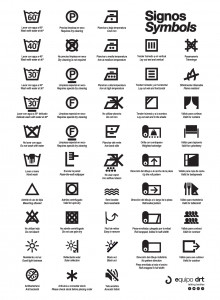Over the last few months, there are increased concerns about hygiene both in our homes and public spaces, which leads us to think about how to wash the fabrics around us. Because of Covid-19, many people are wondering whether they can wash fabrics. Can we wet them? What cleaning products can be used? Water and soap, bleach, ethanol-based disinfectants, ozone?
Proper washing prolongs the life of fabrics and helps them stay beautiful. Equipo DRT recommends following washing instructions which are specified according to the type of fiber. Some may be washed with water and soap or diluted bleach, while others may require dry cleaning.
Washing with soap
Washing with soap and water is the most effective way to fight against COVID-19. This microorganism has a fat membrane that can easily be destroyed by using common disinfectants and detergents.
Keep in mind the difference between viruses and bacteria in this sense. Antibacterial treatments are effective to avoid these organisms. They are mandatory application in textiles used in healthcare but are not the solution for Covid-19.
Soap and water can be used on most of our curtain and upholstery fabrics. This method works well on natural fibers such as linen and cotton, as well as synthetic fibers such as polyester and Trevira CS.
Bleach washable
Some fabrics can be washed with water and diluted bleach. These fabrics are made with solution dyed acrylic yarns and are resistant to color loss even when washed with diluted bleach. All the outdoor collections can be cleaned in this way.
It is common practice in Spain to use a few drops of bleach on white fabrics such as bed sheets. It is necessary to bear in mind the recommended parts of water and bleach required.
Washing with ethanol-based disinfectants
Ethanol-based disinfectants (used in products like gel-based sanitizers) can be used on synthetic fibers but may harm the color. Even in low concentration, the chemical disinfectant might deteriorate and fade the color of the fabric over time.
Dry cleaning
Some fabrics cannot be immersed in water as they shrink, deteriorate, deform or alter color. There are several types of dry cleaning, depending on the solvents used. Perchloroethylene is the most common solvent used in dry cleaning.
Other types
Other types of treatments such as ozone or ultraviolet light have not been tested on our fabrics, therefore, cannot be recommended.
Moreover, ozone can penetrate into fibers and takes longer to dissolve so there may be toxicity issues. They would definitely have to be well aired out.
Current studies show that COVID-19 can survive on textiles for 48 in normal conditions. The risk of contracting the virus from fabrics is quite low. Due to its porous surface, these “holes” can trap the virus and prevent its transfer.
Many will have doubts. We recommend you to carefully read the washing instructions. Please feel free to contact us if you need any further information (drt@equipo-drt.es). We want your fabrics to be just as lovely as on day one.
Our “First aid” Guide on washing fabrics
